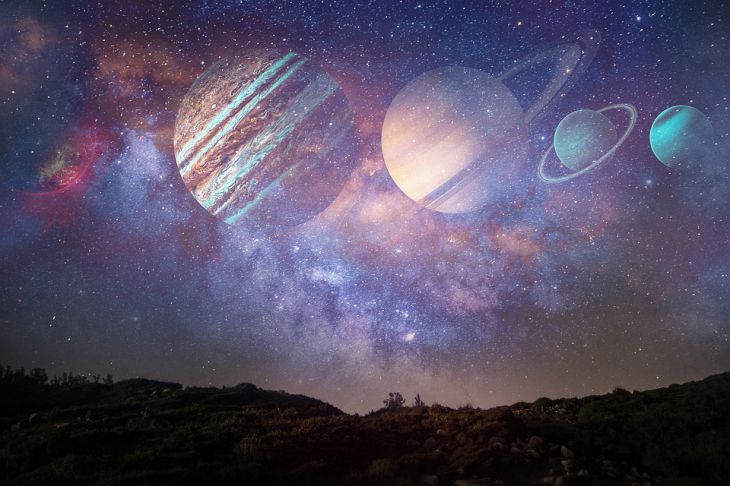A group of influential scientists believes that the American Space Agency NASA should give priority to the flight to Uranus
The "Ice Giant" is the seventh planet of our Solar System, located 19 times farther from the Sun than the Earth.
This planet was surveyed only once, in 1986 during a brief flight of the Voyager 2 probe.
Scientists believe that an in-depth study of Uranus can help them to understand better the many objects of similar size that currently exist in the universe.
This recommendation is contained in a document published by the US National Academy of Sciences, Engineering and Medicine (NAS).

These proposals, known as the "ten-year review," cover important questions of planetary science and desirable space missions needed to prepare answers to the questions posed by the American research community.
In general, NASA followed the recommendations of previous reports of the National Academies.
The last planetary ten-year study, published in 2011, identified as two main priorities the mission to collect rocks on Mars, which became the Perseverance rover and which is currently located on the surface of the Red Planet; and the mission to Jupiter and its satellite Europe, which is now being prepared and is scheduled to launch in 2024. The spacecraft will be called Europe Clipper.
Known facts about Uranium
• Discovered by Sir William Herschel in 1781
• Orbits the sun every 84 earth years
• Its diameter is four times that of our planet
• Hydrogen and helium dominate the atmosphere
• It has at least 13 rings and numerous moons
• The seventh planet from the Sun
• Average distance from the Sun is 3 billion km
Experts studying the outer planets of our Solar System have been making suggestions for a second visit to either Uranus or Neptune since Voyager 2 visited them in the late 80s. And the arguments in favor of this visit are only increasing, as the supporters of this study have noticed.
Uranus and Neptune dominate the range of sizes of planets that are now found around other stars and which are about three to four times the width of the Earth.
"And this actually creates a problem for theories of planet formation," explained Professor Lee Fletcher, who participated in the formation of the report.
"We think we understand how something gets as big as Jupiter, and we think we understand how something gets as big as Earth and Venus. But in the middle, in such a sweet spot between these final members, we don't fully understand how the world can start to grow and grow, and not just keep growing to become the size of the mass of Jupiter. A mission to Uranus could help us answer this question," a scientist from the University of Leicester in the UK told BBC News.
In 2031 and 2032, there will be favorable launch opportunities that will allow the spacecraft to use a gravitational slingshot around Jupiter to reduce the flight time to Uranus to "just" 13 years.
The spacecraft will be able to enter orbit around the planet, but this will exclude any observations of a more distant Neptune. The eighth and most distant planet will be waiting for its turn.
Uranus is an exception compared to other planets in the Solar System in the sense that its axis of rotation is almost parallel to the plane of its orbit around the Sun. It looks as if he was knocked over on his side, which is explained by the scientists' version that he was subjected to a strong collision with another body at the beginning of his life.
Uranus has rings and many moons.
Most likely these moons are "ocean worlds".
European astronomy scientists, such as Professor Fletcher, hope that the European Space Agency (Esa) will also be able to contribute to such a mission.
NASA and Esa are often partners, for example, in the Cassini-Huygens mission to Saturn (2004-2017), but unfortunately their priorities and funding cycles do not always coincide.
The speed with which NASA will be able to complete this study will depend on other financial obligations of this organization.
However, the decadal research group stated that the fulfillment of the tasks of the Perseverance rover and the mission to Uranus should become a priority.









